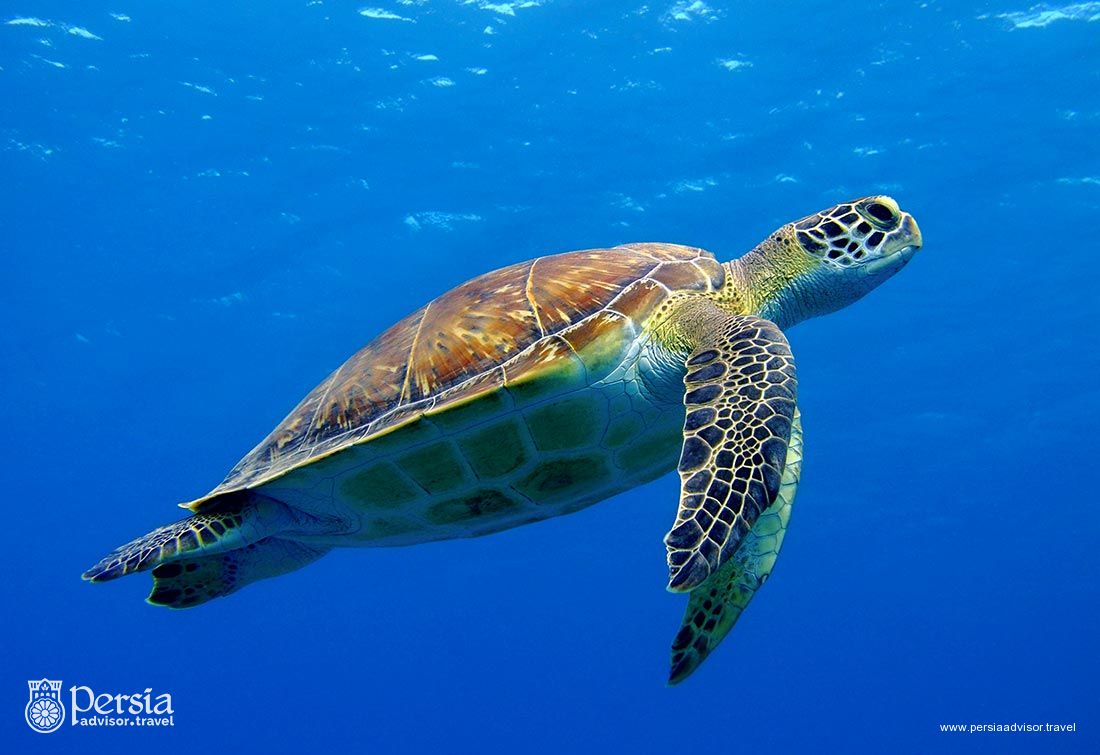
Hawksbill Sea Turtle, Iran
Photo by blue-sea.cz / Shutterstock
Hawksbill sea turtle is a kind of marine turtle in Persian Gulf but its different beak and diet which is based on eating sea sponge make it the most unusual type of marine turtle.
Its head is similar to that of birds of prey. Its beak is like the beak of eagle to pull its principal food i.e. sea sponge out of corals and hence it is called hawksbill sea turtle.

Non-hatching Eggs of Hawksbill Sea Turtle on Beach Sand
Photo by Kleber Cordeiro / Shutterstock
The adult turtle has an oval carapace which has a very beautiful combination of colors including golden and dark brown and red, black and orange streaks. The underneath of its body has a light color.

Baby Turtles (Hawksbill Sea Turtle) Popped Out of the Sand and Waddled Toward the Ocean
Photo by Abdul Razak Latif / Shutterstock
Spring is the season of nesting among this species. Building a nest and laying egg happen during 14-16 days. Nesting usually happens at nights. The female turtle lays its eggs in a hole near the beach and then goes back to the sea. After about two months, the baby turtles hatch at night and instinctively crawl into the sea. If baby turtles do not reach the water by daybreak, they will be preyed upon by hunters like birds and crabs. They will be mature after 20 years and due to having a hard carapace, only a very limited hunters like saltwater crocodile, shark and octopus are capable of preying these turtles.
The habitat of these turtles can be seen in Nakhiloo and Ommolkorm islands in Bushehr province and Qeshm, Kish, Shidvar, Hendorabi, Hengam and Hormoz islands in Hormozgan province.
